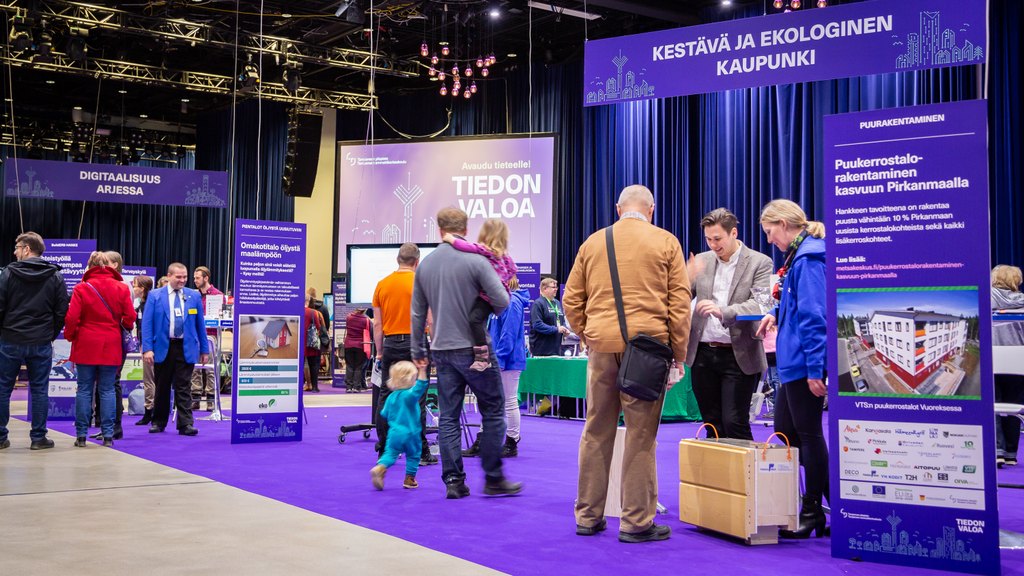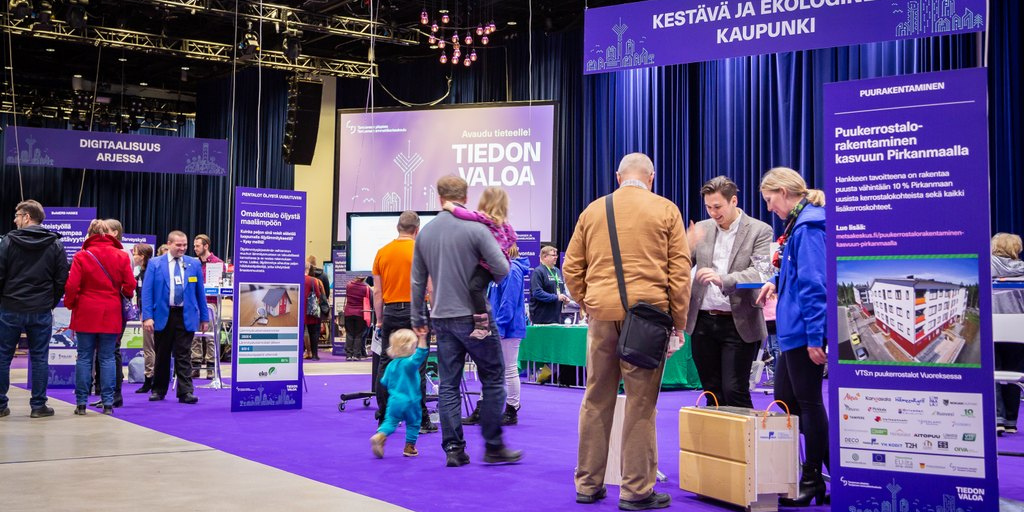A smart city is designed together
11.2.2020
Technology is a great asset when designing the smart cities of future, but first and foremost it is about people. Citizen participation was strongly emphasised in Tiedon valoa (Light of Knowledge) event that opened the Tampere Smart City Week.

Digitalisation is probably not an everyday word to use among the participants in a children’s science workshop, but the kids didn’t hesitate to grab the applications. For example robot pets and balls or 3D art created using a glue gun were a perfect hit for the 6- and 8-year-old children of Leo Hillman’s family. Even their 1-year-old began to discover the makings of a smart city.
– We appreciate this kind of easily accessible technology education and interactivity, says Hillman.
Laura Airaksinen participated in the science event with her 7-year-old, who is very interested in all sorts of building, programming and mathematics stuff. So an event encouraging experimenting and a hands-on-attitude was exactly the right choice. For example programmable Legos are a simple, fun and modern way to start learning to code.
Better living for residents and businesses
The Light of Knowledge family event shared main themes with Tampere Smart City Week. Participants got together to consider in a panel discussion, how a smart city will be designed in a way that allows everyone to get their voices heard.
– Technology is an enabler, but the core idea of a smart city is to offer better and more sustainable living for residents and businesses. The City of Tampere has been emphasising citizen participation and empowerment, said Teppo Rantanen, Executive Director of Growth, Innovation and Competitiveness at the City of Tampere, in his introductory remarks.
City plans and actions tend to have significant effects on citizens’ neighbourhoods and everyday life. That’s why there is a good chance citizens might really have the will to participate, especially when it can be done easily. For an increasing part of the population this means using new digital channels (e.g. a new citizen participation and feedback tool planned for the Tampere.Finland application).
Participatory budgeting is smart co-creation
The future smart city is already in the making in Tampere today, as the City is getting ready for participatory budgeting. It allows residents to plan and decide how to use 450 000 euros, a sum allocated from the City budget for improving the well-being of children and youth. Residents are encouraged to share their ideas on how to promote it in their own neighbourhoods. The Light of Knowledge event was one of the first occasions for residents to get to know more about the new plans.
– This spring we’ll open a digital platform, and ideas will be collected there. To enable as many people as possible to participate, user help will be available in schools, youth centres, libraries etc. says Lilli Siikasmaa, Coordinator at the City of Tampere.
Ideas are collected between April 15 and May 15, using the mun.tampere.fi platform (it will go live in the beginning of April 2020). The ideas will be co-developed and at the end of the year residents will vote and choose the ones to be put into practice. The voting age is 12 years. The digital platform serves as a citizen participation tool after that, too.
Smartness is in the citizens
Smart city is an enabler, concluded the panel. When residents unite their forces and start to work together for ideas they find important, the city should pave the way when possible.
– This is a power that has not yet been exploited fully, said Antti Wallin, Postdoc Researcher in the Tampere University.
Applications and technological solutions are not the only channel of participation in the future smart cities. Accessible user interfaces and more traditional ways of participation are needed, because some people are not comfortable in the digital environment.
– Smartness does not originate from technology, it is in the citizens. The future city is still a place where people live their everyday life, and should be developed from that point of view, said Helena Leino, Senior Lecturer in Environmental Policy, Tampere University.
Making smart city together
Smart city is not the same city for everyone. Senior Scientist Jouko Myllyoja said, from the foresight research point of view, that a future smart city should be able to take the aging population into account. An increasing amout of people will want to live in their own homes as long as possible and participate actively in the society. The nature of work is also changing. Work becomes more fragmented, entrepreneurship and remote working more common. The big question is, how to design the future smart cities to respond to these various and changing needs.
The panel discussion was moderated by Liisa Häikiö, Professor of Social Politics, Tampere University. She wrapped the discussions up with a proposal: Tampere should launch a citizens’ vision process. So maybe quite soon residents will come together to examine, how they see the future smart city and what are the points they want to promote in it.